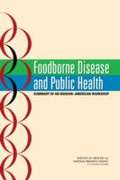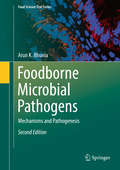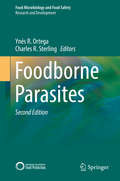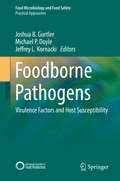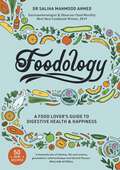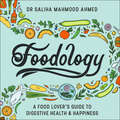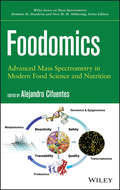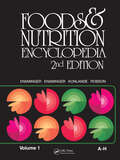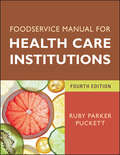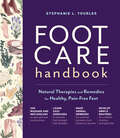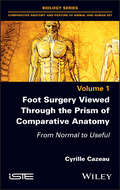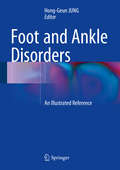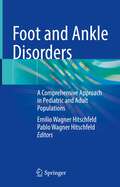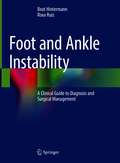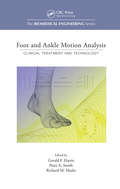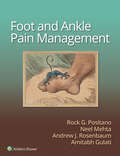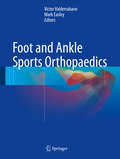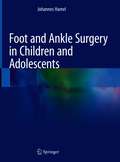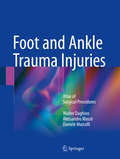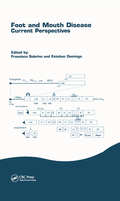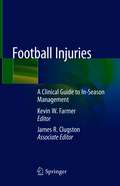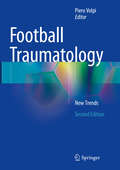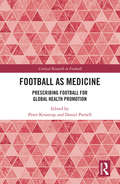- Table View
- List View
Foodborne Disease and Public Health: SUMMARY OF AN IRANIAN-AMERICAN WORKSHOP
by Institute of Medicine National Research Council of the National AcademiesThe Institute of Medicine's Food and Nutrition Board and the National Research Council's Policy and Global Affairs Division convened a workshop in Washington, D.C., entitled Foodborne Disease and Public Health: An Iranian-American Workshop. The overall goals of this workshop were to facilitate the exchange of ideas about foodborne disease and public health and to promote further collaboration among Americans and Iranians on this topic of mutual interest. Experts invited to participate in this workshop addressed a variety of topics, ranging from the surveillance of outbreaks of foodborne illness to approaches to medical training in the Iranian and U.S. educational systems. The workshop was part of a series of cooperative efforts between the United States and Iran as the two countries have collaborated in the past on similar projects relating to foodborne disease.
Foodborne Microbial Pathogens: Mechanisms And Pathogenesis (Food Science Text Ser.)
by Arun K. BhuniaThis book primarily covers the general description of foodborne pathogens and their mechanisms of pathogenesis, control and prevention, and detection strategies, with easy-to-comprehend illustrations. The book is an essential resource for food microbiology graduate or undergraduate students, microbiology professionals, and academicians involved in food microbiology, food safety, and food defense-related research or teaching. This new edition covers the significant progress that has been made since 2008 in understanding the pathogenic mechanism of some common foodborne pathogens, and the host-pathogen interaction. Foodborne and food-associated zoonotic pathogens, responsible for high rates of mortality and morbidity, are discussed in detail. Chapters on foodborne viruses, parasites, molds and mycotoxins, and fish and shellfish are expanded. Additionally, chapters on opportunistic and emerging foodborne pathogens including Nipah virus, Ebola virus, Aeromonas hydrophila, Brucella abortus, Clostridium difficile, Cronobacter sakazakii, and Plesiomonas shigelloides have been added. The second edition contains more line drawings, color photographs, and hand-drawn illustrations.
Foodborne Parasites
by Ynés R. Ortega Charles R. SterlingThe globalization and commercialization of the food system has unintentionally led to the introduction of new foodborne parasites in countries worldwide. Fortunately, advances in detection and control are providing the basis for a better understanding of the biology and control of parasitic infections, and this in turn will likely contribute to the reduction and hopefully elimination of parasitic foodborne outbreaks. Building on the first edition, this completely revised second edition of Foodborne Parasites covers the parasites most associated with foodborne transmission and therefore of greatest global public health relevance. The volume examines protozoa and their subgroups: the amoeba, coccidia, flagellates and ciliates. Chapters also address Trypanosoma cruzi, recently recognized as an emerging foodborne protozoan. The helminth section is expanded to cover teniasis, cysticercosis, hydatidosis, and the trematodes and nematodes including Angiostrongylus, which is present worldwide. Finally, the editors examine the burden and risk assessment determinations that have provided a scientific framework for developing policies for the control of foodborne parasites.
Foodborne Pathogens
by Michael P. Doyle Joshua B. Gurtler Jeffrey L. KornackiFoodborne illnesses continue to be a major public health concern. All members of a particular bacterial genera (e. g. , Salmonella, Campylobacter) or species (e. g. , Listeria monocytogenes, Cronobacter sakazakii) are often treated by public health and regulatory agencies as being equally pathogenic; however, this is not necessarily true and is an overly conservative approach to ensuring the safety of foods. Even within species, virulence factors vary to the point that some isolates may be highly virulent, whereas others may rarely, if ever, cause disease in humans. Hence, many food safety scientists have concluded that a more appropriate characterization of bacterial isolates for public health purposes could be by virotyping, i. e. , typing food-associated bacteria on the basis of their virulence factors. The book is divided into two sections. Section I, "Foodborne Pathogens and Virulence Factors," hones in on specific virulence factors of foodborne pathogens and the role they play in regulatory requirements, recalls, and foodborne illness. The oft-held paradigm that all pathogenic strains are equally virulent is untrue. Thus, we will examine variability in virulence between strains such as Listeria, Salmonella, Campylobacter, Cronobacter, etc. This section also examines known factors capable of inducing greater virulence in foodborne pathogens. Section II, "Foodborne Pathogens, Host Susceptibility, and Infectious Dose" , covers the ability of a pathogen to invade a human host based on numerous extraneous factors relative to the host and the environment. Some of these factors include host age, immune status, genetic makeup, infectious dose, food composition and probiotics. Readers of this book will come away with a better understanding of foodborne bacterial pathogen virulence factors and pathogenicity, and host factors that predict the severity of disease in humans.
Foodology: A food-lover's guide to digestive health and happiness
by Saliha Mahmood Ahmed'A spicy educational treat to be savoured: a delight.' Tim SpectorThe book will take you on a joint culinary and scientific journey through the gut. It is an unapologetic celebration of what I believe to be the most amazing organ of the body, that will enhance and enlighten the way you cook and eat. Saliha Mahmood AhmedWritten by a gastroenterologist and award-winning food writer, Foodology offers a unique perspective on the joy of eating. Explaining the process of digestion and how the food we eat influences the way we feel, Saliha draws on the latest science and her own experiences as both a doctor and a cook, to bring the subject to life. From childhood memories of devouring Indian street food to why munching on a jam doughnut brings gastronomic happiness, Saliha also offers 50 new, simple, delicious and mostly vegetarian recipes to help you explore your gut health and find your own gastronomic happiness.Foodology takes you on a journey from the first smell of food and bite of goodness through to the time it takes for food to leave the system, and all the processes in between. Have you ever thought about why certain smells can make your mouth water, how the texture of food can impact your taste and why some foods can make you bloat? Saliha takes you on an extensive journey through the gut to show you the true joy of food and why gastronomic happiness is so important to our lives.'A great book for anyone who wants to cook a very tasty supper that hits the spot and also get to know their bodies, moods and emotions better. Foodology is both fascinating and full of delicious meals to enjoy cooking.' Melissa Hemsley'This is a book in the finest tradition of narrative recipe writing. It's a heavenly mix of whimsy, life and science, grounded in solid technique and blissful flavour.' William Sitwell
Foodology: A food-lover's guide to digestive health and happiness
by Saliha Mahmood Ahmed'A spicy educational treat to be savoured: a delight.' Tim SpectorThe book will take you on a joint culinary and scientific journey through the gut. It is an unapologetic celebration of what I believe to be the most amazing organ of the body, that will enhance and enlighten the way you cook and eat. Saliha Mahmood AhmedWritten by a gastroenterologist and award-winning food writer, Foodology offers a unique perspective on the joy of eating. Explaining the process of digestion and how the food we eat influences the way we feel, Saliha draws on the latest science and her own experiences as both a doctor and a cook, to bring the subject to life. From childhood memories of devouring Indian street food to why munching on a jam doughnut brings gastronomic happiness, Saliha also offers 50 new, simple, delicious and mostly vegetarian recipes to help you explore your gut health and find your own gastronomic happiness.Foodology takes you on a journey from the first smell of food and bite of goodness through to the time it takes for food to leave the system, and all the processes in between. Have you ever thought about why certain smells can make your mouth water, how the texture of food can impact your taste and why some foods can make you bloat? Saliha takes you on an extensive journey through the gut to show you the true joy of food and why gastronomic happiness is so important to our lives.'A great book for anyone who wants to cook a very tasty supper that hits the spot and also get to know their bodies, moods and emotions better. Foodology is both fascinating and full of delicious meals to enjoy cooking.' Melissa Hemsley'This is a book in the finest tradition of narrative recipe writing. It's a heavenly mix of whimsy, life and science, grounded in solid technique and blissful flavour.' William Sitwell
Foodology: A food-lover's guide to digestive health and happiness
by Saliha Mahmood AhmedA game-changing exploration of the amazing organ that is the human gut, which will transform your relationship with food.The book will take you on a joint culinary and scientific journey through the gut. This is not a book about 'dieting' in the conventional sense, nor is it a didactic manual on how to make each and every food decision in life. It is an unapologetic celebration of what I believe to be the most amazing organ of the body, that will enhance and enlighten the way you cook and eat. Saliha Mahmood AhmedWritten by a consultant gastroenterologist and award-winning food writer, Foodology offers a unique perspective on the joy of eating. Explaining the process of digestion and how the food we eat influences the way we feel, Saliha draws on the latest science and her own experiences as both a doctor and a cook, to bring the subject to life. From childhood memories of devouring Indian street food to why munching on a jam doughnut brings gastronomic happiness, Saliha offers simple, delicious and mostly vegetarian recipes to help you explore your gut health and find your own gastronomic happiness.Foodology takes you on a journey from the first smell of food and bite of goodness through to the time it takes for food to leave the system, and all the processes in between. Have you ever thought about why certain smells can make your mouth water, how the texture of food can impact your taste and why some foods can make you bloat? Saliha takes you on an extensive journey through the gut to show you the true joy of food and why gastronomic happiness is so important to our lives.(P)2021 Hodder & Stoughton Limited
Foodomics: Advanced Mass Spectrometry in Modern Food Science and Nutrition (Wiley Series on Mass Spectrometry #52)
by Alejandro CifuentesProvides the latest "-omics" tools to advance the study of food and nutrition The rapidly emerging field of foodomics examines food and nutrition by applying advanced "-omics" technologies in order to improve people's health, well-being, and knowledge. Using tools from genomics, transcriptomics, epigenomics, proteomics, and metabolomics, foodomics offers researchers new analytical approaches to solve a myriad of current challenges in food and nutrition science. This book presents the fundamentals of foodomics, exploring the use of advanced mass spectrometry techniques in food science and nutrition in the post-genomic era. The first chapter of the book offers an overview of foodomics principles and applications. Next, the book covers: Modern instruments and methods of proteomics, including the study and characterization of food quality, antioxidant food supplements, and food allergens Advanced mass spectrometry-based methods to study transgenic foods and the microbial metabolome Mass spectrometry-based metabolomics in nutrition and health research Foodomics' impact on our current understanding of micronutrients (phenolic compounds and folates), optimal nutrition, and personalized nutrition and diet related diseases Principles and practices of lipidomics and green foodomics Use of chemometrics in mass spectrometry and foodomics The final chapter of Foodomics explores the potential of systems biology approaches in food and nutrition research. All the chapters conclude with references to the primary literature, enabling readers to explore individual topics in greater depth. With contributions from a team of leading pioneers in foodomics, this book enables students and professionals in food science and nutrition to take advantage of the latest tools to advance their research and open up new areas of food and nutrition investigation.
Foods & Nutrition Encyclopedia, 2nd Edition, Volume 1
by Marion Eugene Ensminger Audrey H. EnsmingerFoods and Nutrition Encyclopedia, 2nd Edition is the updated, expanded version of what has been described as a "monumental, classic work." This new edition contains more than 2,400 pages; 1,692 illustrations, 96 of which are full-color photographs; 2,800 entries (topics); and 462 tables, including a table of 2,500 food compositions. A comprehensive index enables you to find information quickly and easily.
Foods That Harm, Foods That Promote Health: A Biochemical and Nutritional Perspective in Health and Disease Prevention
by Stefan A. Hulea AhmadiThis book looks at fresh (fruits and vegetables) and processed foods from a biochemical and nutritional perspective, as well as the relationship between their content in micronutrients and phytochemicals and the major killer diseases such as cardiovascula
Foodservice Manual for Health Care Institutions
by Ruby Parker PuckettThe thoroughly revised and updated fourth edition of Foodservice Manual for Health Care Institutions offers a review of the management and operation of health care foodservice departments. This edition of the book-which has become the standard in the field of institutional and health care foodservice-contains the most current data on the successful management of daily operations and includes information on a wide range of topics such as leadership, quality control, human resource management, product selection and purchasing, environmental issues, and financial management. This new edition also contains information on the practical operation of the foodservice department that has been greatly expanded and updated to help institutions better meet the needs of the customer and comply with the regulatory agencies' standards. Topics covered include: Leadership and Management Skills Marketing and Revenue-Generating Services Quality Management and Improvement Planning and Decision Making Organization and Time Management Team Building Effective Communication Human Resource Management Management Information Systems Financial Management Environmental Issues and Sustainability Microbial, Chemical, and Physical Hazards HACCP, Food Regulations, Environmental Sanitation, and Pest Control Safety, Security, and Emergency Preparedness Menu Planning Product Selection Purchasing Receiving, Storage, and Inventory Control Food Production Food Distribution and Service Facility Design Equipment Selection and Maintenance Learning objectives, summary, key terms, and discussion questions included in each chapter help reinforce important topics and concepts. Forms, charts, checklists, formulas, policies, techniques, and references provide invaluable resources for operating in the ever-changing and challenging environment of the foodservice industry.
Foot Care Handbook: Natural Therapies and Remedies for Healthy, Pain-Free Feet
by Stephanie L. TourlesThe number of people who experience foot pain is on the rise, and it&’s been shown that those plagued by chronic foot pain are more likely to have pain in other parts of their bodies. In Foot Care Handbook, best-selling author, herbalist, and certified foot reflexologist Stephanie Tourles sets out to help readers experience the feel-good benefits of healthy, happy feet. Along with natural remedies for common foot problems—including athlete&’s foot, blisters, bunions, corns, cracked skin, and plantar fasciitis—she explains foot physiology for the layperson and provides exercises for stretching and strengthening feet; massage techniques for foot relaxation and restoration; and reflexology. Friendly, accessible, and empowering, this guide gives readers the tools and information they need for feeling better on—and about—their feet.
Foot Surgery Viewed Through the Prism of Comparative Anatomy: From Normal to Useful
by Cyrille CazeauComparative anatomy helps to define among surgical procedures, those that are able to restore early walking function using really useful structures, without necessarily respecting the normal anatomy. This book proposes an original vision based on the following ideas : • The cure is complete only if it occurs quickly, which is vital for vulnerable patients. • The surgical goal isn't the anatomical restitution ad integrum, but to resore the fonction, that of the permanent terrestrial human bipedalism. To identify it, put it back into its evolutionary context and compare it to the anatomo-functional models of our closest relatives, the great apes. • Achieving this dual objective through new surgical techniques (percutaneous and minimally invaseve), associated with biomechanical data for immediate and total support.
Foot and Ankle Disorders
by Hong-Geun JungThis book, specifically designed to be of value in clinical practice, is an up-to-date, case-oriented reference on the various foot and ankle disorders that is presented in the style of a teaching file, with a wealth of informative illustrations. The text is concise and informative, providing a general overview of each disorder, identifying key points for correct diagnosis and differential diagnosis, and highlighting tips and pitfalls in conservative and operative treatment. The most important feature, however, is the depiction of representative cases by means of detailed, high-quality color photographs that will acquaint the reader with the key appearances relevant to diagnosis and treatment. Foot and Ankle Disorders will serve as a user-friendly source of information for all who deal with these conditions. It will be especially valuable for those with a keen interest in treatment algorithms, surgical techniques, and prevention of surgical complications.
Foot and Ankle Disorders: A Comprehensive Approach in Pediatric and Adult Populations
by Emilio Wagner Hitschfeld Pablo Wagner HitschfeldThis book offers an updated guide to the foot and ankle, and presents them at different ages, which will allow the reader to analyze and understand how the foot develops from the early stages to adulthood. It provides a general overview of the anatomy, biomechanics, diagnosis, surgical approaches, treatment alternatives, and complications in connection with pediatric and adult foot and ankle problems, gathering in-depth information on frequent pathologies in a single source.Written by world-renowned experts, the book offers various points of view on the topics discussed. This comparative approach is generally lacking in foot and ankle literature, an oversight that the book addresses.The content consists of 59 chapters, divided into the following major sections: Basic sciences and general considerations, Pediatric orthopedics and traumatology, Adult orthopedics and Adult sports lesions and traumatology.Foot and Ankle Disorders: A Comprehensive Approach in Pediatric and Adult Populations will be of major interest for orthopedic surgery residents, for orthopedic surgeons who are starting their careers, and for experienced ones seeking updated information on the foot and ankle.
Foot and Ankle Instability: A Clinical Guide to Diagnosis and Surgical Management
by Beat Hintermann Roxa RuizThis book comprehensively discusses the basic and practical aspects of foot and ankle surgery applied to all pathologies resulting from instabilities of these joints, a condition that remains underestimated. Uniquely, it not only addresses injuries to the lateral ankle ligaments, but also examines injuries to the deltoid-spring ligament complex, the syndesmotic and chopart joint ligaments, as well as peritalar instability – all pathologies that have often been neglected in the past. For each type of instability, it describes the anatomical basics and the biomechanical features, allowing readers to understand the injury pattern, the subsequent symptoms and clinical findings. Further, it offers guidance on selecting the most appropriate imaging tool for diagnosis and planning surgical reconstruction. Written by world-renowned pioneers in the field, and featuring a wealth of high-quality, intraoperative pictures, the book guides readers step-by-step through the latest, innovative technical surgical solutions for each condition.With its consistent structure, from the basics to the solution, its problem-oriented approach as well as its meticulously selected iconography, this book is a must-read for all orthopedic surgeons with an interest in foot and ankle surgery whishing to explore this promising field. Further, it is a valuable resource for residents, researchers and physiotherapists wishing to gain insights into foot and ankle instability and reconstructive surgery.
Foot and Ankle Motion Analysis: Clinical Treatment and Technology
by Gerald F. Harris Peter A. SmithHuman motion analysis or gait analysis is used throughout the country and the world in clinics for pre-surgical planning and postsurgical follow-up. Only recently have technological advances truly begun to meet medical needs by supplying more accurate analytical data from which to make educated assessments of dynamic foot and ankle pathology. A com
Foot and Ankle Pain Management
by Amitabh Gulati Rock G. Positano Neel Mehta Andrew J. RosenbaumOffering a comprehensive, multidisciplinary approach to a complex topic, Foot and Ankle Pain Management is a first-of-its-kind reference to this commonly presenting problem. Drs. Rock G. Positano, Neel Mehta, Andrew J. Rosenbaum, and Amitabh Gulati provide authoritative clinical guidance from areas of expertise in musculoskeletal podiatry, pain medicine, physiatry, and orthopaedic surgery. This first-line resource covers relevant anatomy, pain conditions, and treatments in a well-organized, easily referenced manner—offering a complete approach to care for foot and ankle specialists, pain medicine specialists, primary care physicians, pediatricians, and other clinicians who encounter patients with foot and ankle pain.
Foot and Ankle Sports Orthopaedics
by Mark Easley Victor ValderrabanoThis book provides a comprehensive review of the diagnosis, management and treatment of sports injuries to the foot and ankle. The editors have assembled a list of contributors at the top of their field to define the medical management, treatment and surgery for the most common and highly debilitating sports injuries. Currently, foot and ankle injuries are the most common musculoskeletal injuries, thus this book fills the clear need for a state-of-the art resource that focuses upon this growing area of orthopaedic practice. Foot and Ankle Sports Orthopaedics is highly relevant to orthopaedic surgeons, sports orthopaedic surgeons and medical professionals dealing with sports injuries around the F&A. With clear and didactic information and superb illustrations, this book will prove to be an indispensable learning tool for readers seeking expert guidance to further their surgical skills in this area.
Foot and Ankle Surgery in Children and Adolescents
by Johannes HamelDrawing on the latest evidence, this book guides readers through the diagnosis and surgical treatment of the most common pediatric foot and ankle deformities and pathologic conditions. Thanks to a wealth of images, readers will gain new insights and learn new concepts for several surgical procedures – with a special focus on all aspects of clubfoot treatment, new techniques in coalition surgery and new concepts in planovalgus and cavovarus correction. The book also features a number of cases that observe a given condition over an extended period: idiopathic clubfoot, subtle and rigid planovalgus deformity, skew foot, cavovarus foot, supramalleolar and forefoot deformities and others. For each surgical technique, it thoroughly discusses the indications, provides valuable tips, and highlights potential pitfalls. Functional aspects are moreover emphasized by pedographic observation. This comprehensive book offers a valuable asset for foot and ankle surgeons, pediatric orthopedic surgeons, physical therapists and pediatricians alike.
Foot and Ankle Trauma Injuries: Atlas of Surgical Procedures
by Walter Daghino Alessandro Massè Daniele MarcolliThis full-color atlas offers a systematic guide to performing surgeries for the most common traumatic lesions of the foot and ankle. It features a wealth of didactic illustrations, achieved with a particular technique employing colors and transparencies that also reveals those anatomic structures that are not visible in the surgical field, but essential to a good outcome. Divided into seven chapters, the book provides coverage of all anatomic segments, presenting each topic logically and explaining all types of lesions, even the most difficult, complicated or infrequent ones; discussing the indications and objectives of the surgical treatment; describing the surgical technique (patient positioning, approach, tips and tricks for reduction, means of osteosynthesis); and providing recommended post-operative protocols. Unique in its exclusive focus on foot and ankle traumatology, this atlas offers an invaluable resource for all surgeons and residents who need a systematic overview of the main treatments options for these segments.
Foot and Mouth Disease: Current Perspectives
by Esteban Domingo Francisco SobrinoThe shock following the recent outbreak of foot-and-mouth disease (FMD) in the UK dispelled the notion that this disease was permanently under control and could be forgotten. FMD proved to be an endemic disease in many countries and continues to pose a major threat to animal health worldwide. The development of more effective and socially acceptabl
Football Injuries: A Clinical Guide to In-Season Management
by Kevin W. FarmerIn-season management of (American) football injuries presents a unique set of problems and considerations. Trying to safely return players to play is of great concern from Pop Warner up to the NFL, and managing injuries during the season with the plan of operative repair in the off-season is also a unique concern with these athletes. Management during the season to allow return to play, while minimizing the risks of further injury, is of utmost importance. This unique book will focus on the management of football injuries during the season and on the sidelines. It will focus on both operative and non-operative treatments that allow safe return to play, utilizing not only the latest scientific literature supporting in-season decisions, but also the experiences of the authors, who have spent many years treating these athletes. Divided into sections on orthopedic and medical considerations, the first part is organized anatomically to present the breadth of injury and treatment strategies available, from injuries to the shoulder and elbow, to ACL/MCL/PCL tears and sprains, to tendinopathies and sports hernia, among many other conditions. The second section covers diverse medical topics germane to football, including heat and cardiac issues, traumatic brain injury, mental health and infectious disease considerations, pain management, and the expanding role of platelet-rich plasma (PRP) in non-operative treatment. Presenting the most recent clinical evidence alongside time-tested management techniques, Football Injuries will be a valuable addition to the practices of orthopedic surgeons, sports medicine specialists, sideline medics and athletic trainers, and primary care physicians treating these athletes.
Football Traumatology
by Piero VolpiThis book provides a comprehensive guide to the evaluation, treatment, and rehabilitation of musculoskeletal injuries commonly experienced by football (soccer) players. It will be of particular value for orthopedists and sports medicine practitioners, and will provide the information required by trainers and medical staff regarding the traumatic lesions associated with the sport. It is also anticipated that the book will assist in reducing the risk of trauma in footballers. The new edition has been revised to reflect advances in knowledge and practice and will be more valuable than ever, given that the risk of trauma continues to increase owing to the intensity and speed of modern football, the current training methods, and technical and tactical innovations. Injuries are a major adverse event during a footballer's career, and they require appropriate medical and/or surgical treatment and rehabilitation. The overviews provided in this book will help in delivering such care.
Football as Medicine: Prescribing Football for Global Health Promotion (Critical Research in Football)
by Peter Krustrup Daniel ParnellIt is beyond dispute that physical activity is good for us, but what are the benefits, challenges and impacts of sport on health? This is the first book to focus on football in the context of health from individual, public and population-level perspectives. Football as Medicine examines the effects of football training on the three main types of fitness (cardiovascular, metabolic and musculoskeletal) and on specific target populations (for example, children, type 2 diabetes patients, cancer patients, people with mental health conditions, the socially deprived and older people). It discusses the significance of football for public health and assesses the efficacy of football interventions by clubs and community sport development programs. With its multi-disciplinary approach, this is a valuable resource for students, researchers and practitioners working in physical activity and health, public health, health promotion and medicine, as well as football and sport business management, sport and exercise science, and the sociology of sport.
